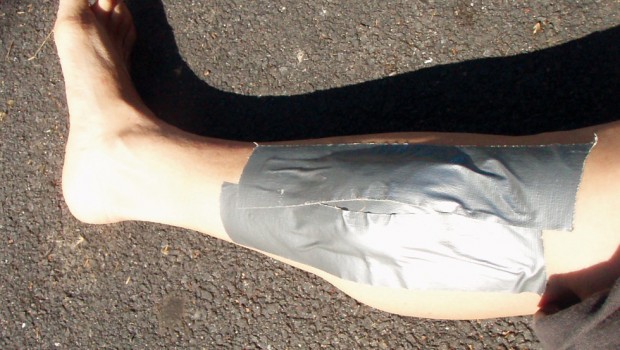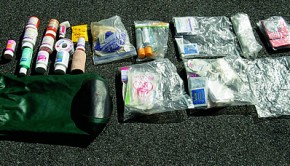What’s up Doc? Proper Wound Care Management
 What’s Up Doc? – Proper Wound Care Management
What’s Up Doc? – Proper Wound Care Management
by Dr. Jessie Stone
Many paddlers, especially those I treat overseas or on multi-day trips, have trouble with wound care and management. What do I mean by that? A simple cut turns into a major infection and someone ends up on antibiotics and off the water. If a small wound is neglected it can lead to a serious and nasty infection later. Basic wound care is practical and easy, and knowing how to manage something that needs stitches is very useful.
A preventative measure I encourage for everyone is to make sure their tetanus shots are up to date. Anytime you get a cut or laceration or anything in between, you are at risk of being exposed to tetanus. The shot is good for 10 years, and tetanus is not something you want to experience – it’s a horrible way to die.
Once you have a wound, cleaning it well is the first essential step. Generally speaking, gashes that you get in the river are cleaner wounds than those you get on land. Both types need to be cleaned, however. The best way to clean a wound is with soap and water. The soap does not have to be fancy, special soap and the water does not have to be drinking water.
The important thing is that you get the soap into the wound and wash it well. A big mistake people make is cleaning a wound with iodine or betadine and leaving it in the wound. What this does is kill more tissue and create a larger center for infection to develop. If you are cleaning with betadine or iodine, make sure you rinse the cut out very well and don’t leave any on the skin.
The best way to ensure that your wound is both dirt and soap free is to wash out the wound with high-pressure irrigation. That means push as much water under pressure as possible through the affected area. A great way to do this is with a zip lock bag. Poke a tiny hole in the corner of the bag and fill it with river water. As you squeeze the bag, you will get a pressurized stream coming out. Direct that stream into the wound. Depending on the size of your bag and the size of your wound, you may have to do this a few times to get the wound really clean. This part can be painful for the person you are treating but ultimately you are doing them a favor by cleaning out the area well. The idea behind high-pressure irrigation is that you reduce the bacteria cell count in the wound even if you are using water that is not perfectly clean. Reducing the bacteria count is going to reduce the likelihood of infection, and any water is great for this purpose.
Once your wound is clean, you can decide how you want to close it. The main reason to close a wound is to stop bleeding. Secondarily, closing it can give a smaller scar and may keep the wound cleaner. Steri strips, super glue, or plain old Band-Aids can be used for this purpose. These are all important items to keep in your first aid kit along with a zip lock baggie and duct tape. They don’t take up much room and can serve multiple purposes.
Super glue can be used in place of stitching a wound and often has a better cosmetic result. It is bactericidal and will kill any nasty bacteria in the wound. When you put super glue on the wound, it will burn and sting but that will be short lived. Before using super glue, make sure the edges of the wound are clean and dry. Then apply a thin line of super glue along the wound edges and press them together. Be very careful not to get super glue on your fingers as you may glue yourself to the wound as well. Wounds closed with super glue need to stay dry.
Most gashes will heal fine without stitches or super glue. If you decide to use steri-strips to help close a wound, you can put antibiotic ointment in the affected area before using the strips. That will help the wound stay bacteria free and heal quickly. Ideally, you want to keep these types of wounds not only clean but dry too for about 48 hours. This allows a good scab to form and the real healing to begin. Of course, if you are on a paddling trip this is where you want to use duct tape to cover the dressing you have made and make it water tight.
If you clean a wound well enough and follow these basic instructions, then there should be no need for antibiotics or time off the water. Antibiotics become necessary when a dirty wound heals over or you have not successfully cleaned the wound, so take the time to clean the wound thoroughly and you will be good to go.
Ask the Doc! Visit paddleworld.com contact page and ask Jessie about any injury related to kayaking. www.paddleworld.com/contact-us/





